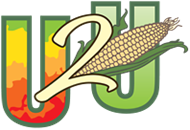Implementing conservation practices can be a complicated process, requiring access to numerous types of information to make the best decisions in a given production system. Numerous decision support tools exist that can help support on-the-ground decision making by farmers, landowners, and the advisors they work with. In addition, there are tools that can help planners and conservation professionals decide where and how to focus their efforts. Below are some tools that can be helpful in both planning and implementing conservation practices.
CaRPE Tool

Developed by American Farmland Trust, the CaRPE tool is a science-based modeling tool that uses remote sensing data to estimate the impact of conservation adoption on greenhouse gases (GHG). This powerful planning tool allows users to estimate GHG impact under different adoption scenarios at a variety of geographic scales, estimate implementation costs, and generate maps and tables.
Corn Belt Weather and Climate Tools
The Useful to Usable (U2U) project was a multi-state, multi-organization effort to identify the data needs around weather and climate and develop tools for farmers and advisors to improve farm resilience and profitability in the U.S. North Central region. The project developed a number of helpful tools, including an AgClimate Viewer to customize historical climate data, and a Corn Split N tool for determining feasibility and profitability of post-planting nitrogen application, among others.

CTIC

The Conservation Technology Information Center (CTIC) has a number of resources to support expanded agricultural conservation, including the Operational Tillage Information System (OpTIS), a remote sensing data platform that maps tillage, residue cover, winter cover, and soil health practices across 16 states.
If you would like a resource added to this page, please reach out using our contact form.



